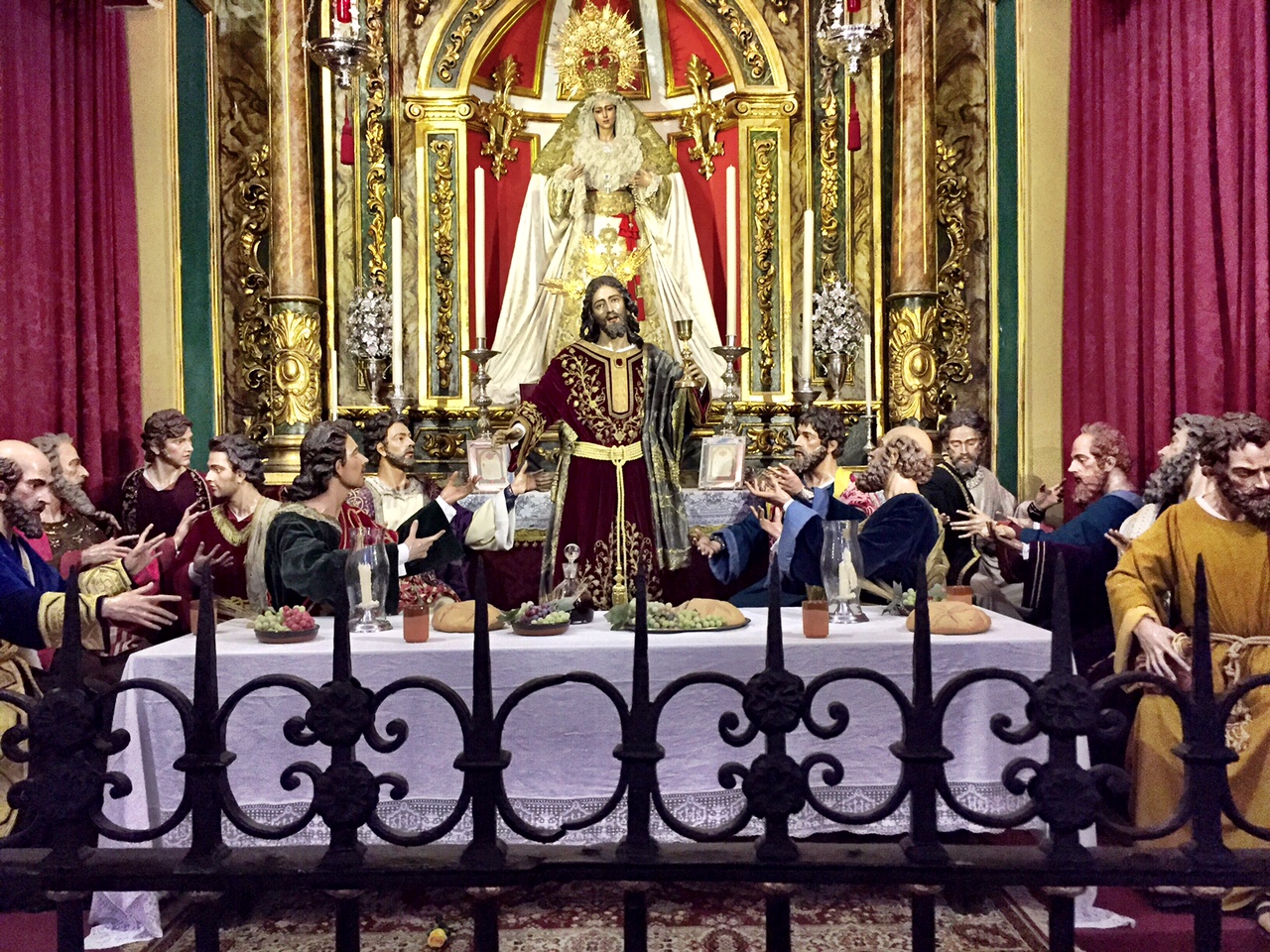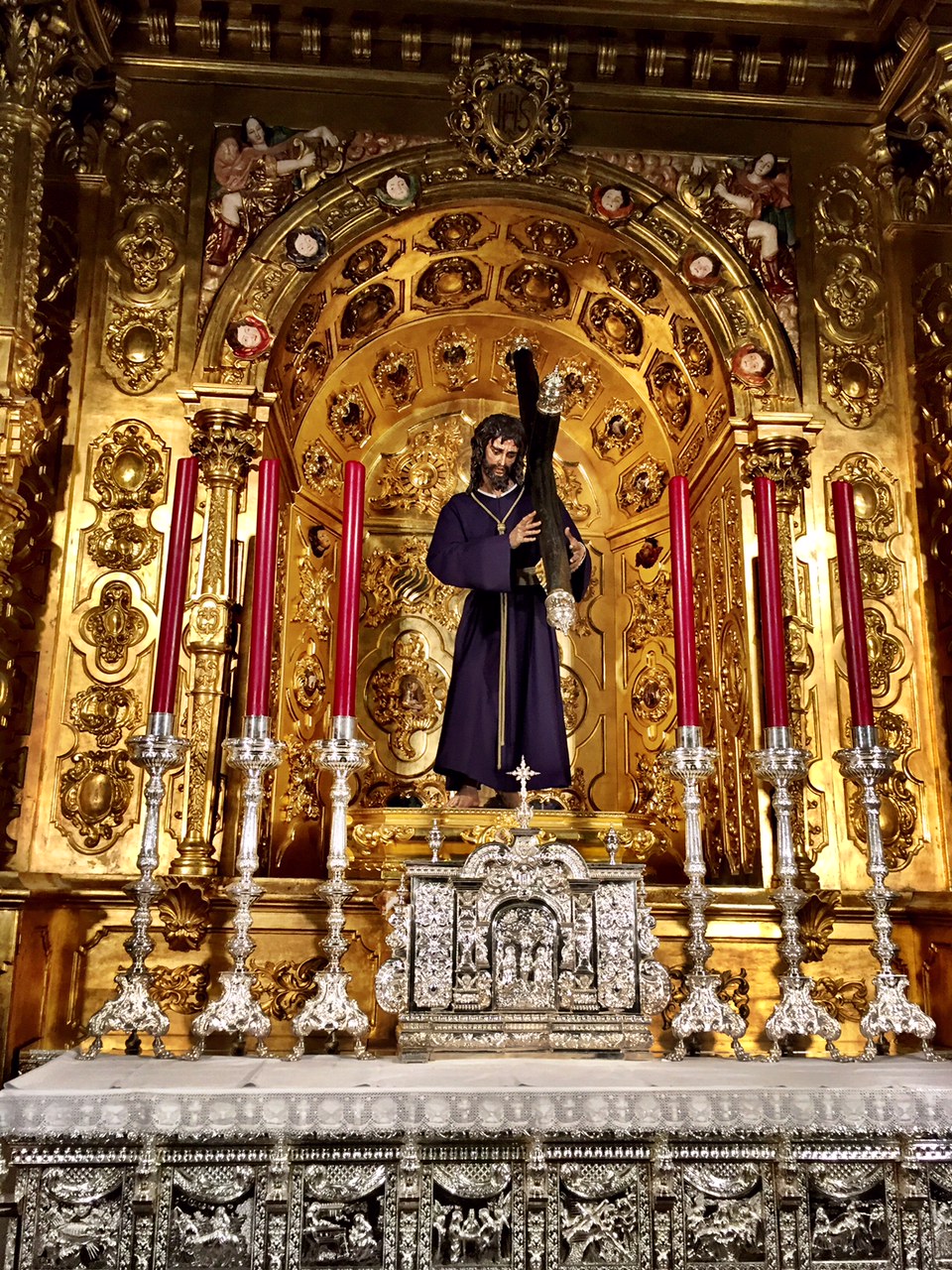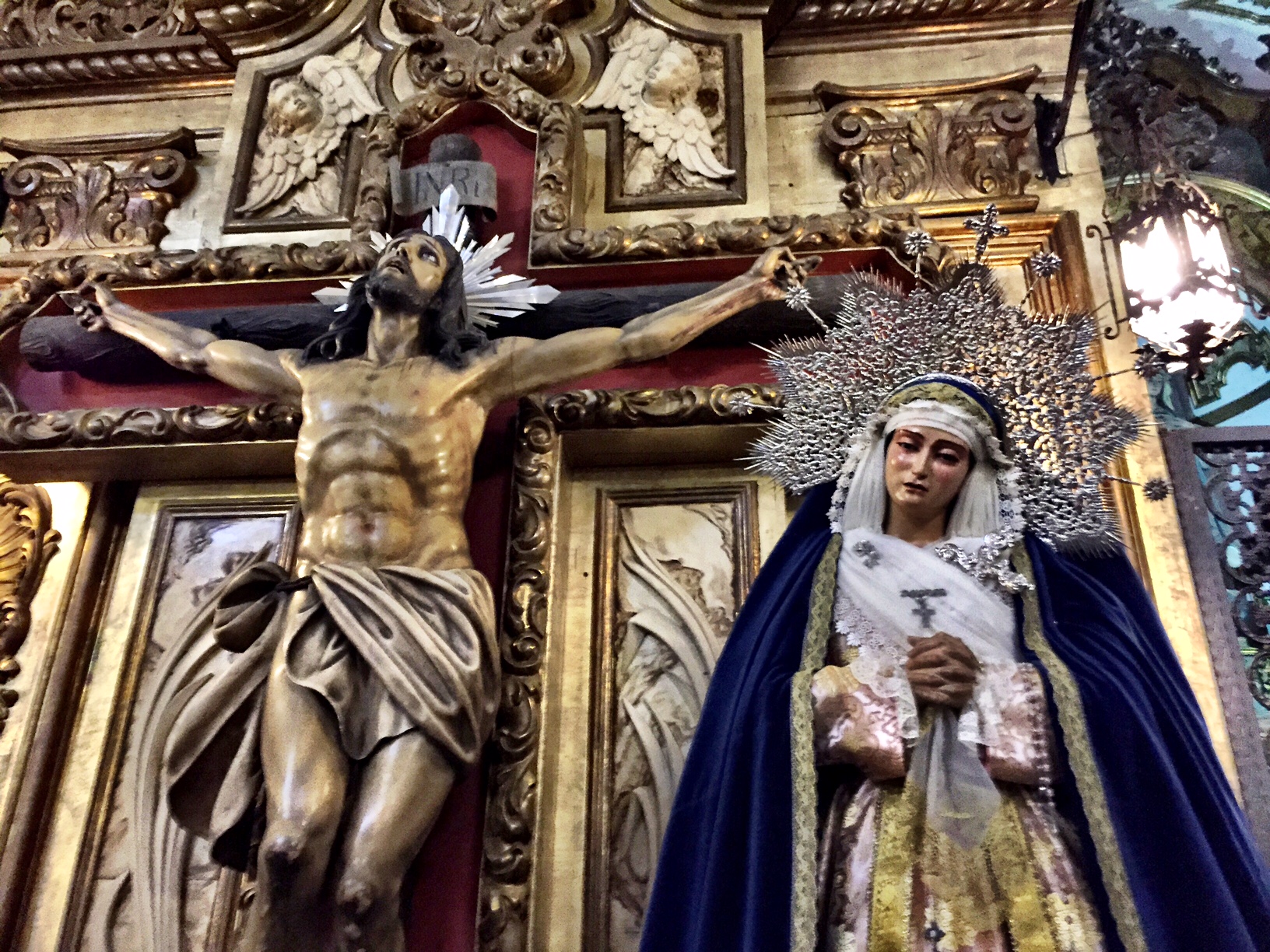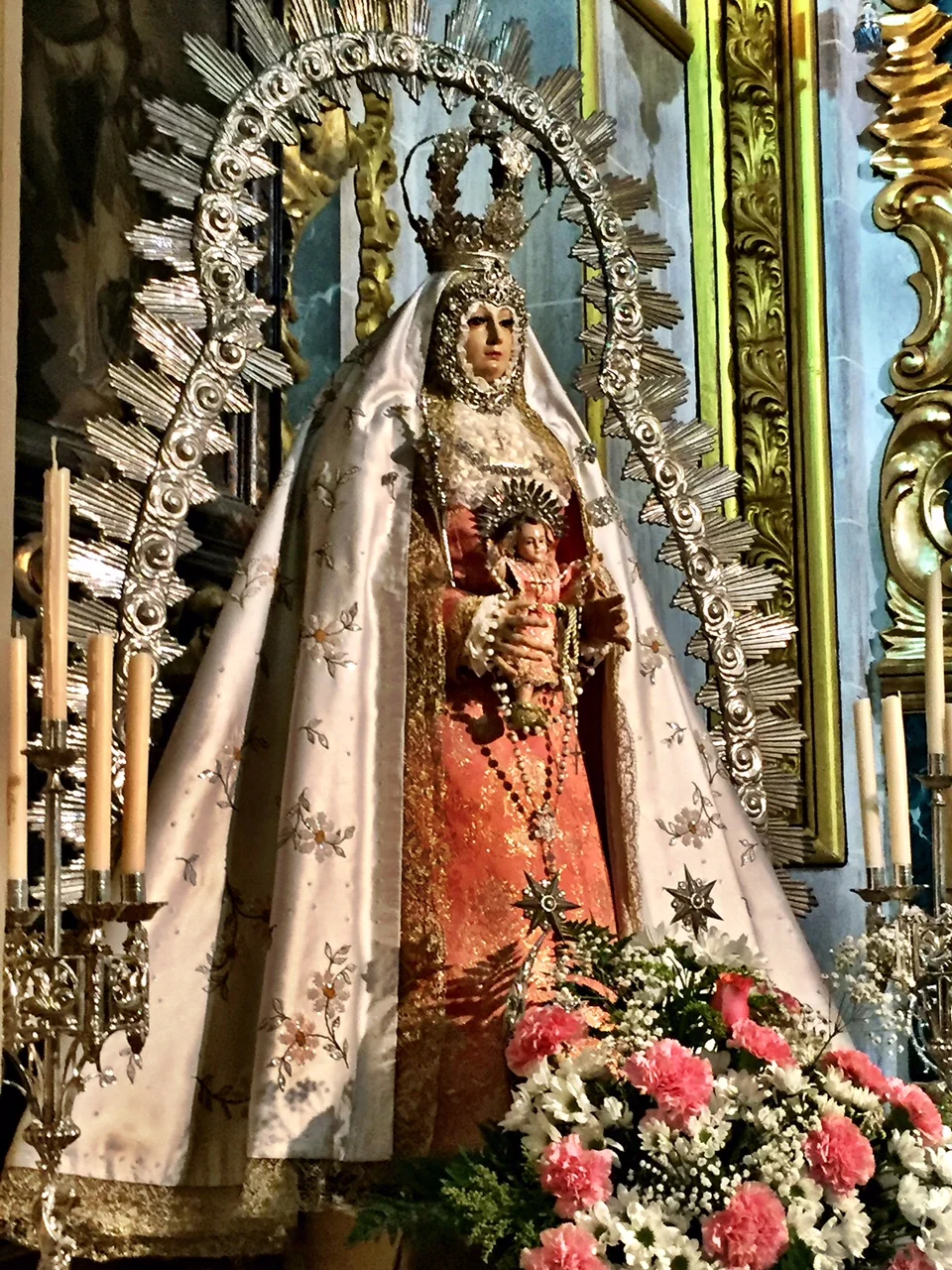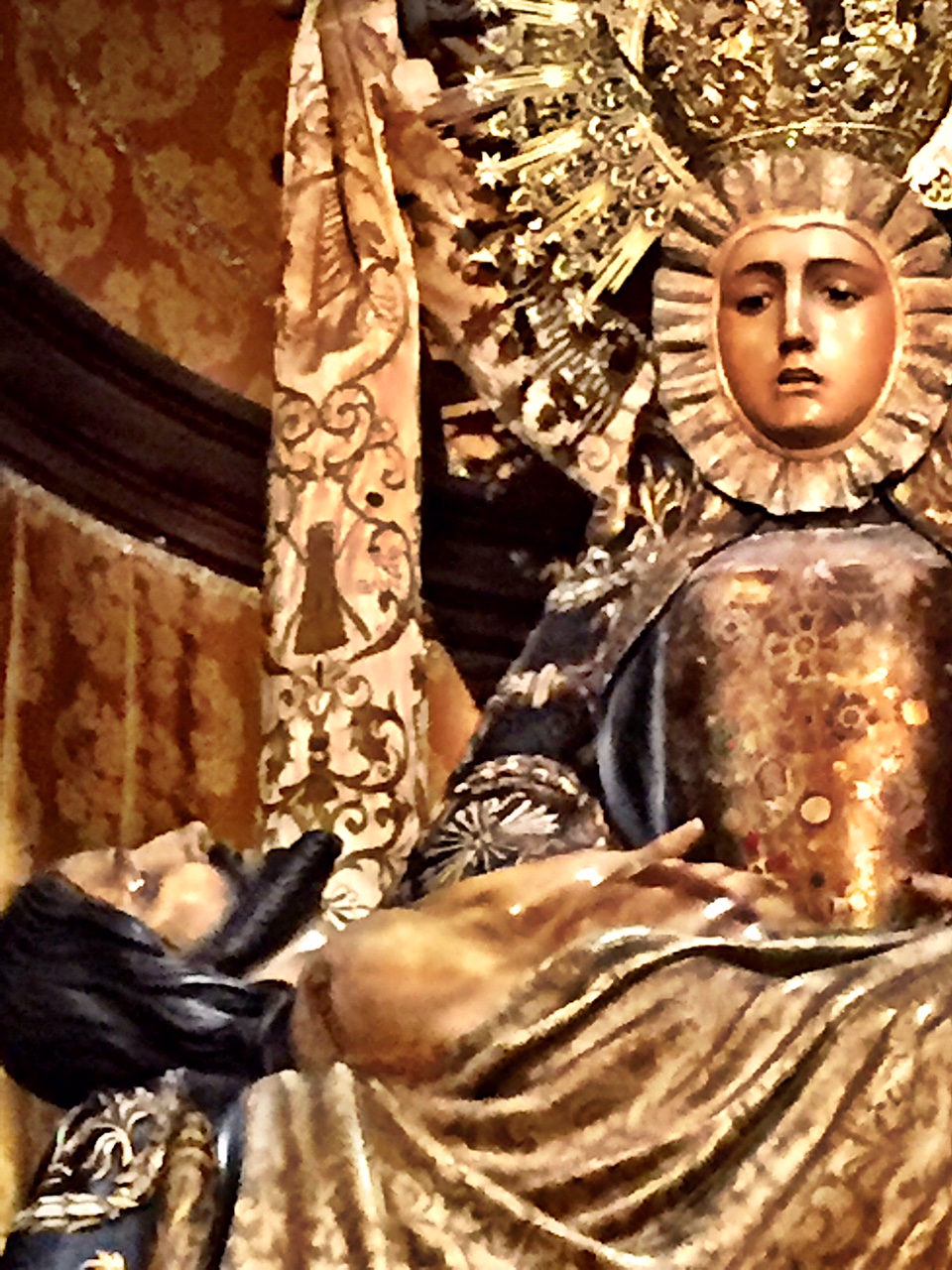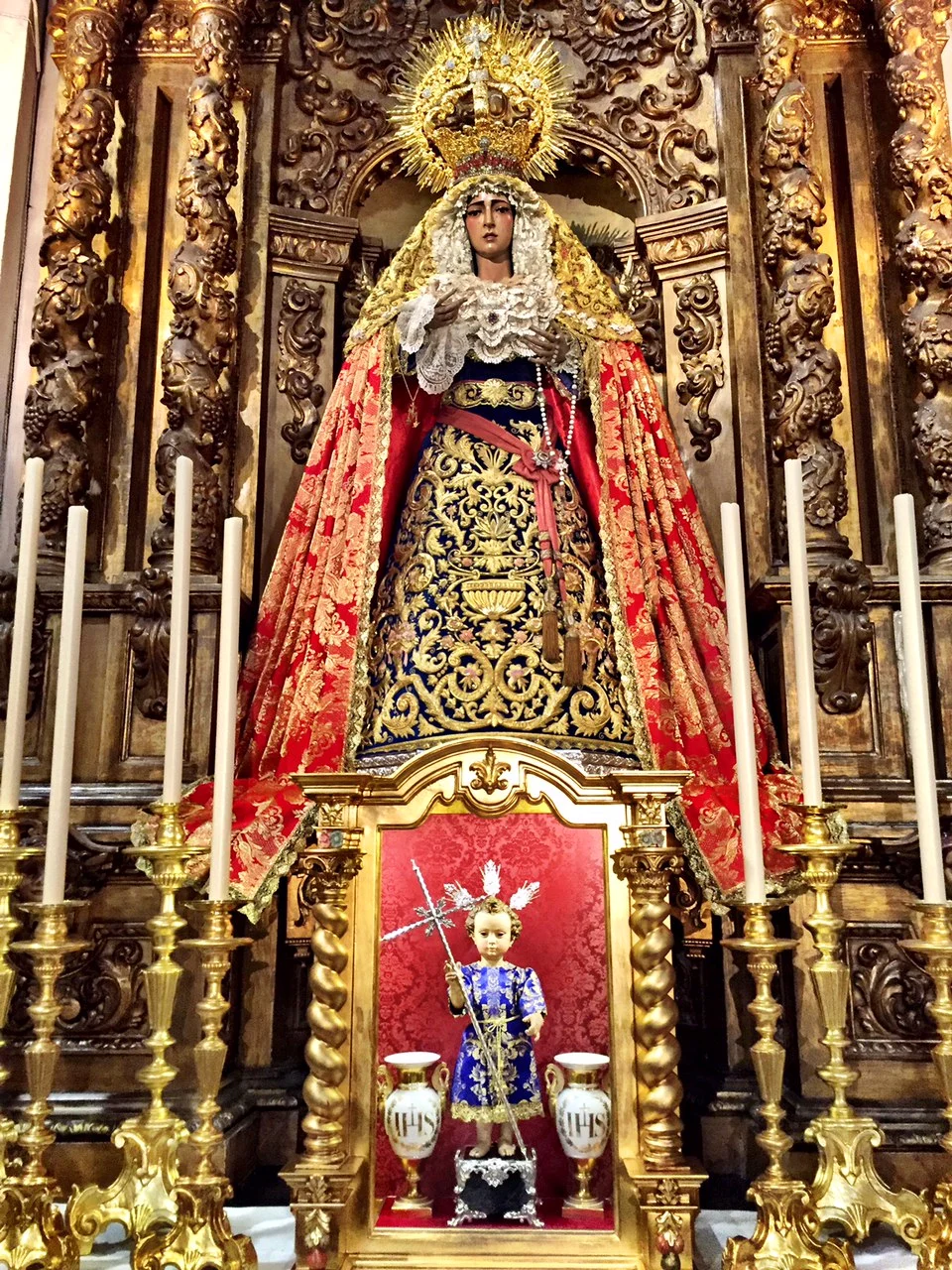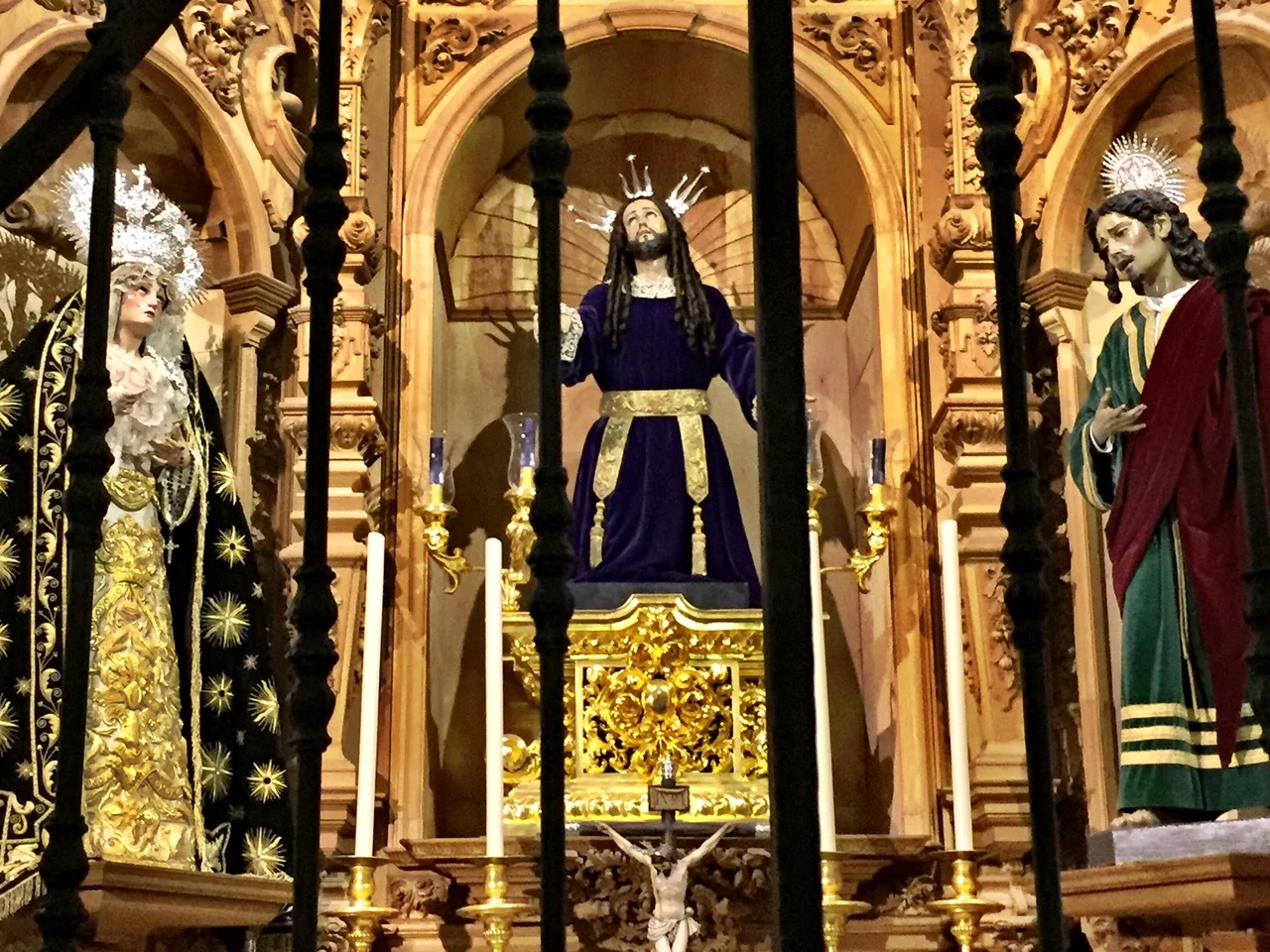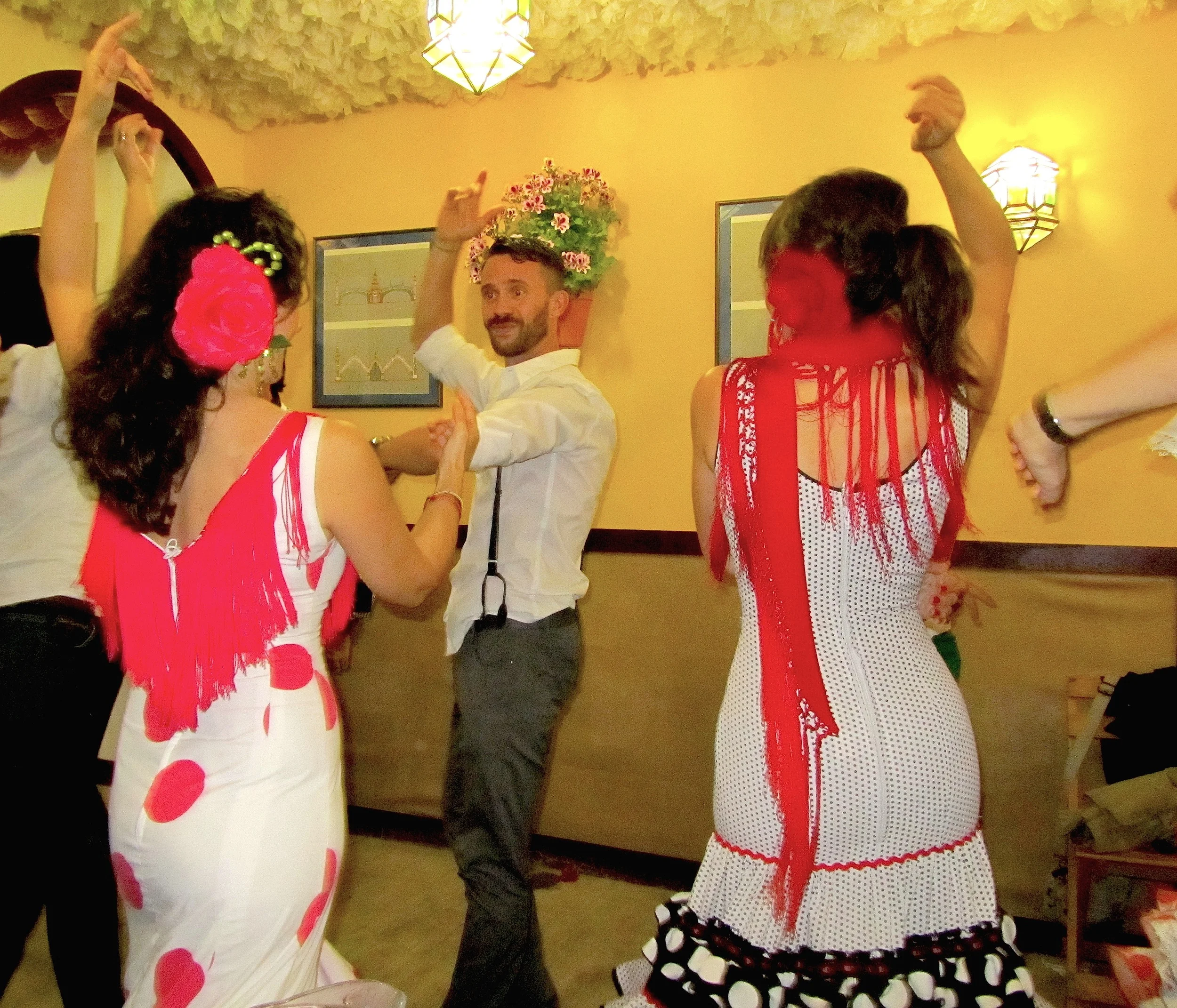A Picasso-inspired mural at the entrance to El Pimpi, a popular Málaga restaurant
Dine alfresco in the heart of Málaga, Spain, at this popular bodega bar, where they roll out the barrel.
The city where the legendary artist Picasso was born is also home to another famous Malagueño: the actor Antonio Banderas.
Upon arriving in Málaga, Wally and I were famished. We told our friend and gracious hostess Jo we wanted tapas, ASAP.
““That’s Antonio’s place,” she said, referring to the entire top floor, which he purchased and renovated a few years ago.”
She led us to El Pimpi, where we sat amidst the crowd outside and ordered up plate after plate of tapas.
The tapas at El Pimpi aren’t the best — but the setting makes up for it
Some sources claim that the name comes from a colloquialism ascribed to the young men who worked at the docks doing odd jobs and acted as unofficial tour guides. Another, less politically correct, source claims that these dock workers facilitated the transport of sailors to the local brothels.
At one point, Jo pointed to the expansive six-story building opposite from the terrace of El Pimpi.
“That’s Antonio’s place,” she said, referring to the entire top floor, which he purchased and renovated a few years ago.
Antonio Banderas’ penthouse in his hometown of Málaga, Spain
Appropriately enough, the actor will be portraying Picasso in the French and Spanish language movie 33 Días, opposite Gwyneth Paltrow, who will play Dora Maar, the painter's muse and lover of nearly a decade. The story is based upon the emotional creation of the artist’s great anti-war, mural-sized painting, Guernica.
Kicking off their visit to España: Jo takes Wally and Duke to the local staple, El Pimpi
Barrels of Fun
We were excited to order Alhambra Reserva, which we enjoyed on a previous visit to Granada, Spain. Wally insisted on ordering croquetas. These are bite-sized, lightly breaded and deep-fried mashed potato fritters with diced ham mixed in. We asked Jo if she would like to share them with us and she replied haughtily, “No thank you. They’re disgusting and have a gummy mouthfeel like fried baby food.”
The restaurant proper contains a warren of rooms that were originally the stables of the Palacio de Buenavista. The walls are decorated with framed photographs and historic Feria and bullfighting festival posters. The Barrel Hall is the first room you pass through entering from the terrace and contains enormous wine barrels autographed by famous politicians, artists and, of course, Antonio Banderas. –Duke
“No thank you. They’re disgusting and have a gummy mouthfeel like fried baby food.”

